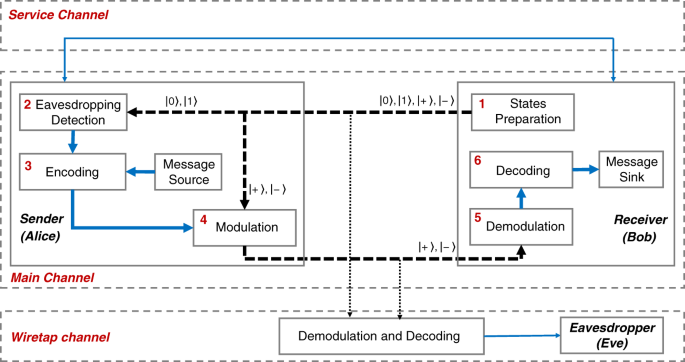Quantum entanglement, a theory of physics postulated by Erwin Schrödinger in 1935, suggests that particles that have interacted with each other at a given moment become quantum entangled.
This entanglement is the basis of the so-called EPR Paradox, postulated by Albert Einstein, Boris Podolsky and Natahn Rosen, which states that if you change the properties of one entangled particle, that property is instantly changed in the other particle, regardless of the distance between them.
This effect, which Einstein called "spooky action at a distance", is currently the basis of quantum computing: transmitting information at a distance, instantaneously, using entangled particles.
The potential of quantum computing is immense, but the distance over which entangled particles can reliably transport information remains a huge obstacle.
In fact, the tiniest disturbance in the interweaving of particles can cause disruptions in the integrity of the information being transported.
Researchers have been looking for ways around this problem. In a study published in 2022 in Light: Science & Applications, a team of scientists from Tsinghua University in China managed to stabilize long lengths of optical fibres.

In another study, in 2017, researchers from the University of Science and Technology of China used satellites to preserve quantum signals through the near-vacuum of space - thus achieving, for the first time, the so-called "ghost effect" from space to Earth.
However, explains Science Alert, a quantum network is more than just transmission, and scientists have been trying to achieve the long-held goal of developing a system of interconnected units, or "repeaters", that could also store and retrieve quantum information, as classical computers do, to extend the reach of the network.

A team of researchers from Imperial College London has now taken a giant step towards achieving this goal.
In a new study, published last week in the journal Science Advances, the researchers have created a system of atomic processing nodes that can contain the critical states created by a quantum dot at wavelengths compatible with the telecommunications infrastructure currently in place.
To do this, two devices are needed: one to produce and potentially entangle photons, and a "memory" component that can store and allow the quantum states of these photons to be retrieved on demand without disturbing them.
"The interconnection of two key devices is a crucial step in enabling the creation of quantum networks and we are very excited to be the first team to be able to demonstrate this," says Sarah Thomas, quantum optics physicist at Imperial College London and lead author of the study.
The new system developed by the ICL team places a semiconductor quantum dot capable of emitting a single photon at a time in a cloud of heated rubidium atoms, which serves as a "quantum memory".
In this device, a laser switches the memory component on and off, allowing the states of the photons to be stored and released from the rubidium cloud on demand.
The distances at which this particular system could transmit quantum memories have not yet been tested; it is for the moment only a prototype, which essentially serves as a proof of concept, based on photons that are not even entangled. But the feat could create a solid foundation for the quantum Internet.
"This unprecedented demonstration of light-on-demand recovery of quantum dots from an atomic memory is a crucial first step towards hybrid light-matter quantum interfaces in scalable quantum networks," the team writes in their paper.
Researchers in quantum computing have been trying to connect photon light sources and processing nodes that store quantum data for some time now, without much success.
"This includes us, who have already tried this experiment twice with different memory devices and quantum dots, over five years ago, which shows how difficult it is," says Patrick Ledingham, experimental quantum physicist at the University of Southampton and co-author of the study, in a statement published on the ICL website.

The memory system designed by Sarah Thomas and colleagues has enough bandwidth to interact with the wavelengths emitted by the quantum dot - and low enough noise not to disturb the entangled photons.
Although the feat is significant, the researchers are still working to improve their prototype - which for now represents only a hope that one day we might see this kind of technology, or something similar, covering the world in a web of delicate but stable quantum networks.
This was a small step for physics, but a giant step towards the quantum internet.







